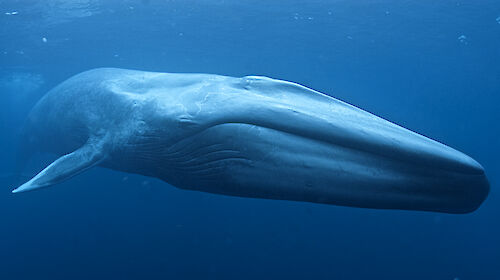The finding, published in Scientific Reports in March, will inform management measures to help the whales recover from 20th Century whaling, which reduced their numbers from some 239,000 individuals to just 360.
“Although the three groups occur together when feeding in Antarctic waters, we found that they are genetically distinct,” Flinders University molecular ecologist, Dr Catherine Attard, wrote in The Conversation.
“This suggests that the three groups breed in different locations, possibly even different oceans, when they migrate north in the winter.”
If the three populations travel different migration paths to separate breeding grounds they will each be affected by different threats, including noise pollution from seismic surveys and shipping activity, entanglement in fishing gear, tourism and climate change. These differences in threats between populations makes population level conservation especially important, to prevent local extinctions.
Understanding the population structure of Antarctic blue whales has been complicated by their mobile lifestyle and the difficulty and expense of finding and tracking them. Since the 1990s, however, ship-based surveys conducted under the auspices of the International Whaling Commission have collected skin and blubber biopsies from the whales.
Dr Attard and her colleagues, Associate Professor Luciana Möller and Professor Luciano Beheregaray, used DNA from 142 of these biopsies to identify and describe the populations of Antarctic blue whales.
“By comparing similarities and differences in the DNA of individuals, we were able to tell which individuals were part of the same population, and estimate the number of populations,” Dr Attard said.
“Individuals from the same breeding population are more genetically similar than those from different populations.”
The team found that individuals from the three populations occur together throughout the Antarctic, possibly because blue whales need to rove long distances around Antarctica to find the large amounts of krill that they feed on.
“We suspect that the three populations go their separate ways when they head north to breed, presumably to the South Pacific, South Atlantic and Indian oceans,” Dr Attard said.
“This should be determined by satellite tagging the whales and watching where they go. More biopsy samples could then be taken at the breeding grounds to confirm which populations are which.
“If we can find out where they go, and what hazards they face on the way, we will be a step closer to helping them recover from their near-annihilation by whalers.”
Genetic data analysis of samples were funded by the Australian Marine Mammal Centre within the Australian Antarctic Division, as well as Flinders University and Macquarie University. Read the scientific paper in Scientific Reports and the study authors’ article in The Conversation (9 March 2016).




